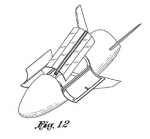Planetary scientists make their recommendations for the kinds of planetary missions they think the United States should do for the next decade. And it looks like a lean future, as the scientists also note that their primary recommendations, missions to Mars and Europa, should only be built if their budgets can be trimmed significantly:
NASA’s top priority, according to the survey’s recommendations, should be the Mars Astrobiology Explorer Cacher, or MAX-C, which could help determine whether Mars ever supported life and offer insight on its geologic and climate history. It would also be the first step in an effort to get samples from Mars back to Earth. However, the report said this mission should only be undertaken if NASA’s cost is about $2.5 billion, which is $1 billion less than independent estimates provided to the panel. The mission would be run jointly by NASA and the European Space Agency, according to the survey.
A mission to Europa and its subsurface ocean — which might support life — should be the second priority mission, the experts said. But its estimated price tag of $4.7 billion may make it too expensive without an increase in NASA’s planetary science budget or a paring of the mission’s costs. [emphasis mine]

